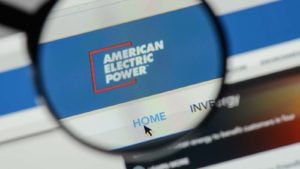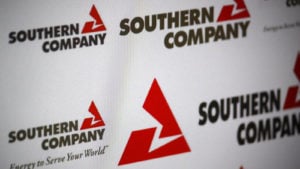Investors in retirement may desire additional income. Those who don’t have a pension are likely relying on Social Security, and their retirement portfolio to cover their expenses. For retirees, investment income from retirement stocks needs to be safe and reliable. This is especially true for high-yielding stocks.
There are dangers in high-yield investments, as this could mean that the underlying business is in trouble, or it could imply a that the dividend payout could be cut. For investors living on a combination of fixed income and portfolio income for retirement, this can be a scary proposition.
With that said, investors who build a portfolio of the top retirement stocks such as utilities, can rest assured that their income is secure, and likely to increase over time. This article will discuss three utility stocks that we feel investors should hold in their retirement portfolio due to their high yields, safe dividend payouts, and reliable dividend growth.
Utility companies as a group have several positives working in their favor. First, utilities often operate in highly regulated markets, which creates high barriers of entry for competitors while also providing durable and long-lasting business advantages. Utility companies are also allowed to pass along costs of their massive capital investments, to customers in the form of rate hikes.
My picks for you today are:
Retirement Stocks: American Electric Power (AEP)

American Electric Power has been in business for well over 100 years and is one of the largest regulated utilities in the U.S. The company provides electricity, transmission and distribution services in 11 states using a variety of energy sources, including coal, natural gas, renewables and nuclear. American Electric Power has a market capitalization of $40 billion and produced revenue of nearly $15 billion in 2020.
American Electric Power has several such rate cases pending. AEP currently has several rates increases request in Kentucky, Louisiana, Ohio, Texas and Virginia.
The company is also leaning into the growing renewable energy space. AEP has plans to install 3.9 gigawatts of solar and 4.4 gigawatts of wind power by the end of the current decade. To help facilitate this ambitious goal, American Electric Power recently purchased Sempra Energy’s (NYSE:SRE) renewable business, which added seven wind farms and a battery installation facility to the company’s portfolio.
The company also has a wind project in Texas, which, when combined with the previously discussed acquisition, will quadruple AEP’s renewable portfolio.
The company’s regulated business plus its plans to substantially expand its renewable energy capabilities should allow it to continue to raise its dividend. Following a 5.7% increase for the Dec. 12 payment, which was above the 10-year average growth rate of 4.8%, American Electric Power has now raised its dividend for 11 consecutive years.
Using the annualized dividend of $2.96 and expected earnings per share of $4.66 for 2021. American Electric Power has a projected payout ratio of 64%. Excluding one year (2016) when EPS declined dramatically, the projected payout ratio is nearly in line with the stock’s average payout ratio since 2010.
Shares yield 3.7% currently, which compares very favorably to the 1.5% average yield for the S&P 500.
Consolidated Edison (ED)

Consolidated Edison is a holding company for Consolidated Edison Company of New York that supplies electricity, natural gas and steam to customers in New York City and Westchester County, New York. The company also owns utilities that operate in New York and New Jersey. Consolidated Edison is valued at just over $24 billion and generated revenues of $12.2 billion last year.
Consolidated Edison benefits from the size of its major market in New York City. The company has a total of 3.7 million electric and 1.2 million gas customers. Consolidated Edison was successful at getting a 6% rate increase for both electric and gas delivery segments in 2018. The second and third phases of these rate increases will take place over the next two years, which should allow the company to see solid growth in its business.
There are some headwinds facing ED stock. The New York State Public Service Commission issued a show-cause order to Consolidated Edison due to the company’s performance during power outages in 2019 and 2020. The company is also undertaking the largest investment program in its history as it aims to install more than five million smart meters in its network by 2020.
In the long run, this will allow customers to optimize energy usage and reduce operating costs, but the total cost of this program is $1.4 billion.
Even with these issues, Consolidated Edison’s dividend is likely safe. The company raised its dividend 1.3%, for its March 15 payment. The dividend increase is rather low, but not too far of the compound annual growth rate of 2.5% that shareholders have seen from the company over the last 10 years. Consolidated Edison’s dividend growth streak now stands at 47 years, which qualifies the stock as a dividend aristocrat.
With an annualized dividend of $3.10 and expected EPS of $4.30 for the year, the payout ratio is 72%. The 10-year average payout ratio is 67% so the projected payout ratio is only slightly higher than average. This should help the company to continue to not only support the current dividend, but also enable future dividend growth as well.
The Southern Company (SO)

The Southern Company supplies electricity to more than four million customers in Alabama, Georgia and Missouri. In addition, the company also counts 4.3 million people amongst its natural gas customer base in Georgia, Illinois, New Jersey, Tennessee and Virginia.
Southern Company has a market capitalization of $63 billion and annual revenues in excess of $20 billion.
Southern Company should also benefit from rate increases going into effect, particularly in its electricity business in Georgia. This region is in the second phase of the planned increase with the third phase beginning next year. The company also has pending rate increase for its gas utilities in Georgia, Illinois and Virginia.
As with many peers, Southern Company has a sizeable amount of debt on its balance sheet. Total debt at the end of the most recent quarter was $51 billion, with $8.5 billion due by the end of 2023, including $4.4 billion due within the year.
Southern Company will likely have to roll at least part of these debt obligations over. One positive from this is that the company will likely see a benefit from lower interest rates.
Southern Company’s dividend growth streak is now at 19 years. The annualized dividend is now $2.56 and is expected to consume 77% of estimated EPS for 2020. Southern Company’s payout ratio has averaged 76% since 2011, so the projected payout ratio is very close to the long-term average and the company has still managed to raise its dividend during this period of time.
Southern Company seems to have turned the corner with regards to its nuclear power plant construction. The company will also enjoy tailwinds from rate increases already in place and those expected to be approved in the near future. This, along with a 4.3% dividend yield, should make the stock an attractive income investment.
On the date of publication, Bob Ciura did not have (either directly or indirectly) any positions in the securities mentioned in this article.
Bob Ciura has worked at Sure Dividend since 2016. He oversees all content for Sure Dividend and its partner sites. Prior to joining Sure Dividend, Bob was an independent equity analyst. His articles have been published on major financial websites such as The Motley Fool, Seeking Alpha, Business Insider and more. Bob received a bachelor’s degree in Finance from DePaul University and an MBA with a concentration in investments from the University of Notre Dame.
